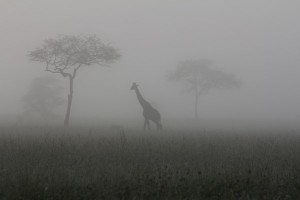Interested in keeping up with developments in the world of Ecology and Evolution? Well then, you’ve come to the right place!
Welcome to BlogRoll, EcoEvo’s fortnightly news and views roundup. Every two weeks, we will present a collections of some of the stories and papers that have caught our eye.

In parasitology, a study which was published in Science has found that women infected with the roundworm Ascaris lumbricoides over their lifetime gave birth to two extra children on average, suggesting the worm altered the immune system in such a way as to make it easier to have children. The 9 year study of 986 indigenous women in Bolivia also found that presence of the hookworm has the opposite effect on the women. Full story via the BBC.
The hills are alive….
The role of ecosystems in popular culture is hard to dispute, with the natural providing the inspiration for countless artworks and songs. A paper released last week in Ecosystem Services by our own Luca Corsieme has quantified the role of ecological references in music. He assessed the inspirational value of ecosystems in popular music in economic terms. He found that 1.4 million songs are inspired by ecosystems, generating a total value of $600 million from 2003 to 2014. This story has received much media interest, with articles covering Luca’s work appearing in The Irish Times, The Irish Independent, Big News Network, and The Daily Express.
Can stress levels dictate rates of evolution?
In a great piece in the Atlantic, Ed Yong describes a study published in Proceedings B that describes how the levels Heat shock protein 90 (HSP90) changes during times of stress. By placing a group of Beetles among wounded peers, it was found that HSP90 was suppressed during times of stress, allowing for greater evolution rates. This finding is particularly interesting as benefits of such as mutation cannot be experienced by the individual, but by the offspring that are produced thereafter, increases their chances of dealing with the challenge at hand. This study raises interesting questions regarding the relationship between the robustness and plasticity of evolutionary adaptations.
Much needed advance against killer fungal disease:
A paper released last week in Biology Letters brought great news to the world of herpetology as Midwife toads on the Spanish island of Mallorca have been declared free of the chytrid fungus Batrachochytrium dendrobatidis. In a report in Nature News, Jaime Bosch, an evolutionary biologist at Spain’s National Museum of Natural History in Madrid, outlined how the result of a 6-year study was carried out using a combination of anti-fungal drugs and by cleansing the ponds in which tadpoles grow. The simplicity of the techniques used brings great promise to the fight against this lethal disease.
Also in herpetology, a paper in Nature Communications Gecko’s amazing wall-walking talent is all in the genes.
Other good reads:
- A paper released this week in Nature Genetics describes how “A ‘supergene’ turns these male birds into female impersonators or sneaky mate thieves — for life” story via the Washington Post.
- After a Mass extinction, only the small survive. Following an extinction event, such as that during the late Devonian, it takes much longer for an ecosystem to become populated with larger animals. This story in the New York Times describes a paper published in Science on November 13th.
- Our Golden Eagles are at risk of Starving and Extinction. This story in The Irish Times is calling upon Minister for Agriculture Simon Coveney to introduce measures to improve conditions in Donegal’s highlands to safeguard the future of Ireland’s Golden Eagle population.
- Pigeons are surprisingly good at detecting tumours. This paper published this week in PLoS ONE reports how Richard Levenson of the University of California, Davis Medical Center and colleagues trained pigeons to recognize images of human breast cancers. In tests, the birds proved capable of sorting images of benign and malignant tumors.
- In an eye-catching paper, a team of researchers from University of California at Santa Barbara and the Massachusetts Institute of Technology have found that chitons, a type of mollusc have eyes made of aragonite. The use of a mineral over organic material allows these chitons to use their eyes as a form of defense. Full story in The Atlantic
And finally…
Army ants have been shown to dynamically adjust the structure of their living bridges (i.e. bridges of ants) according to an algorithm designed to optimise their cost-benefit trade-off. A paper in PNAS details how the ants will collectively bridge gaps in their supply route to optimise the amount of food being brought to the colony. This alone is nothing new. The intriguing aspect of this behaviour is how the ants will; then move their bridge, with the help of additional drones to increase the span, hence creating super-highways for other members of the colony. This piece in the Smithsonian has the full story.
If we’ve missed anything, or you’d like to contribute to our next blogroll, drop us a line at ecoevoblog[at]gmail[dot]com
author: Dermott McMorrough, @derm_mcm



